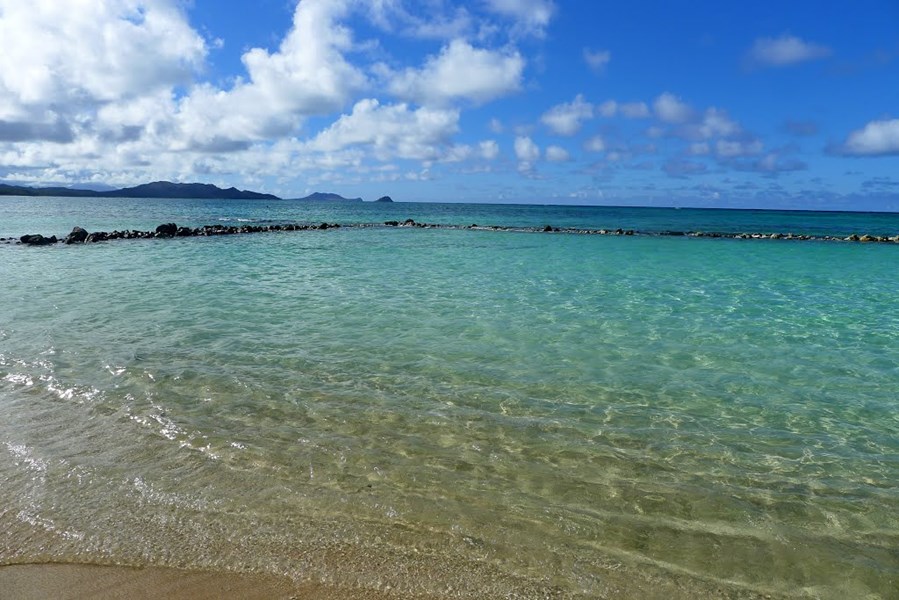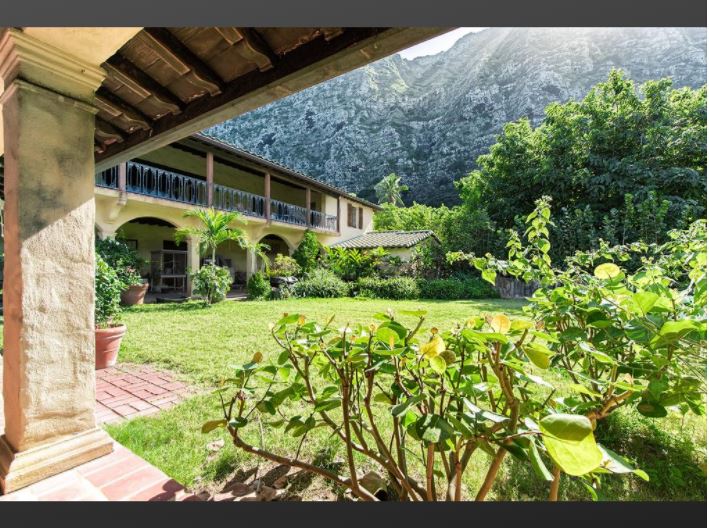Lack of preservation review highlights impacts from statutory changes in 2015
4/4/2018: The Waimanolo Estate known as “Pahonu” has been demolished, according to news accounts this week.
The 8,900 square-foot home was built in 1933 by the family of former Hawaii State Representative Eve Anderson, who was the stepdaughter of Cox Communications heiress Barbara Cox Anthony. The estate was best known as the filming location for “Robin’s Nest,” the featured location on the television series Magnum P.I. which filmed in Hawaii from 1980-1988.
The estate’s architect was Louis Davis, who was a prominent architect of the 1920s-1930s. He moved to Honolulu in 1911 and formed a partnership with C.B. Ripley. He is best known for his Spanish-influenced designs, including the former Police Station on Bethel Street, McKinley High School and the Waikiki Fire Station.
The estate included a Spanish Colonial Revival-style main house, a unique boathouse (which doubled as Magnum’s living quarters on the series), a gatehouse, a storage wing, a private tennis court, and the beach and tidal pool.
The estate is known as “Pahonu” in tribute to the ancient Hawaiian turtle pond on the site. The tidal pool was a pen used to trap sea turtles (“honu” in Hawaiian) as a delicacy for the ali‘i (high ranking chiefs). Turtle meat was kapu (forbidden) to all but the chiefs under penalty of death. The turtle pond and rock wall were restored in the 1960’s and added to the Hawaii Register of Historic Places in 1978.

Pahonu Pond
The estate was purchased by Marty Nesbitt in 2015 for $8.7 million. The City & County of Honolulu Department of Planning and Permitting (DPP) issued a demolition permit last week.
After news of the demolition was announced, Historic Hawaii Foundation (HHF) was contacted by several members of the community with questions about how an iconic and historically significant property could be demolished without review.
“The historic preservation laws that require review prior to alteration or demolition were changed a few years ago,” said Kiersten Faulkner, executive director. “Although Historic Hawaii Foundation opposed the bills to remove the existing protections, the state legislature chose to exempt non-registered dwelling units from the protective measures provided to other property types.”
HB 830 was enacted as Act 224 on July 9, 2015. That measure amended state law to exclude privately-owned, single-family detached dwelling units and townhouses from historic preservation review (HRS 6E-42.2) unless they are listed on the state or national registers; nominated for the register; or located in a historic district.
Prior to the change, state law (HRS 6E-42) required that a county or state agency shall submit any project affecting a privately-owned property over 50-years old that is not listed on the state register of historic places for review and comment by the State Historic Preservation Division. SHPD would review the property to determine if it has historic significance, and review the project to see if it would affect the historic features or integrity. SHPD would then advise the agency of specific conditions for preservation or mitigation that should be part of any approval.
Usually permits would include the conditions, although the agency could reject the SHPD’s advisory comments if it chose to do so. A different section of the law (HRS 6E-10) applies to privately-owned property listed on the historic register, and 6E-8 applies to publically-owned property whether or not they are listed.
“As a result of the statutory change, there has been no historic preservation review for any permits of any magnitude for any privately-owned dwelling of any historic significance, regardless of how important or how impactful the project would be on part of Hawaii’s heritage,” Faulkner said.
Faulkner said that during the 2015 legislative session, several bills were introduced to repeal or revise the preservation statutes.
“The Legislature followed the lead of the Building Industry Association, which argued that the review was stifling development and was too burdensome for contractors and homeowners. SHPD also felt that the volume of project reviews referred to it was unmanageable and the department wanted to reduce its workload,” Faulkner said.
“Historic Hawaii Foundation opposed the change to the law. We offered alternatives that would address those concerns, including trying to establish thresholds for which kinds of permits should be reviewed and what kinds of properties should be reviewed or prioritized. Those options were rejected because they would require professional judgment and rules, while the pro-demolition folks wanted a simple exemption and nothing with nuance. They prevailed with the decision-makers.”
Other local jurisdictions (Hawaii, Maui and Kauai Counties) have established local preservation ordinances, including cultural resource commissions, local historic designations, and planning department procedures. However, City & County of Honolulu has repeatedly refused to implement a local preservation program, despite having enabling legislation to do so. Both HHF and SHPD have tried to get the City to implement its ordinance, but the planning department has not moved forward, said Faulkner.
With the change in the state statute, and in the absence of a local preservation program, there are no state or local government programs in place on Oahu to support the preservation of non-listed, privately-owned historic homes. There are both regulatory and incentive programs available to listed homes only.
“The only safeguard is to have owners who understand and care enough about Hawaii’s heritage to make efforts to preserve and protect it. That was insufficient in this case,” Faulkner said.


